
Welcome, and thanks for coming along!
Photo in the Lady Chapel at York Minster by Joe Priestley.

I'm an architectural photographer. I visit special places and work from my camper van called Woody I share my experiences via this digest.
Photo in the stone mason's yard at York Minster, thanks to Joe Priestley.
⚡️ View the latest digest and the full archive here.

This Digest is free to subscribers and is powered by 124 Members
16 more members will enable another free photo shoot
Member Powered Photography
Animal in the stone mason's yard at York Minster.
'Delight is a mystery. And the mystery is this: to plunge boldly into the brilliance and immediacy of living, at the same time as utterly surrendering to that which lies beyond space and time to see life translucently...'
Alan McGlashan, The Savage and Beautiful Country. (Thanks to Alice Maddicott.)
Between the Fox and the Robin.

It’s the end of March. It’s 05:45. I’m in Dean’s Park at York Minster. It’s dark, and I’m wearing sunglasses. I’m trying to capture the embryonic sun behind the Minster, which is stitching itself into the tapestry of the day—appearing intermittently, bruising my retina. I’ve had so many moments of joy standing beside an ancient edifice, waiting for a glint of light. But this time, it isn’t happening. I get the drone up, but the sun is muddied by the clouds.
And then it happens unexpectedly. This time, it’s not a glint of light but a spark of nature. A fox slinks past me and angles its way through a builder's hoarding, following the 14th-century footprint of the west end of the Minster.

For me, this is a moment of sanctuary: the ragged, ruddy fox against the monolithic west front. I can’t help but wonder how many generations of foxes have graced the curlicue and the curvilinear with their quatrefoil pads.
It’s now the middle of May, and I’m back in front of the fox’s Gothic lair, hoping to get a second chance at capturing the sunrise. Whilst I’m waiting, I think about the days of photography ahead inside the Minster. I’ll keep it loose, I think—take a leaf from the fox’s padding gait—follow my nose and seek out places of sanctuary with my lens as a divining rod.
And the fox thoughts lead my eye upwards into the majesty of this place, to the heart-shaped tracery of the west window, and then up towards the pinnacles that grace the towers. They’re all backlit, beautifully silhouetted.
The sun is finally out.

Ten minutes later, I’m inside, amidst the hush of an empty Minster. I climb up into the organ loft. I feel like I’m standing between two worlds: in front of me, in the quire, the golden hour is burgeoning, but behind me in the nave, the blue hour still lingers. It’s all so overwhelmingly beautiful.

Whilst working my way through the quire I bump into a broderer: a Minster embroiderer. She tells me that her place of sanctuary lies within the south transept. Her story, like her work, weaves in and out of the magical and the unimaginable.
In the weave of her story, the warp is made up of a 13th-century tomb made of Purbeck marble, where lies an effigy with a dragon at its feet. It is the first canopied tomb in England, and beneath it lie the bones of Walter de Gray—Archbishop of York, Lord Chancellor, and witness to the Magna Carta. During conservation in the 1960s, his tomb was opened, and as well as a chalice, paten, and crozier, they found a softness beneath his head—a cushion, a textile with the pattern still visible.

The weft of her story lies around a table of broderers who were tasked with bringing the patterns they found back to life in the form of kneelers. Through this thoughtful communal act came a curious kind of answer to de Gray’s hopes for eternity; they brought back to life the textile that lay beneath his head.




The patterns were of animals that spoke of eternal life, and amidst the gentle whispers of the broderers around the sewing table, there emerged, coursing through the hands of the present, a powerful sense of continuity from the past.
I find it remarkable that within the vastness of the nave and transepts I’m finding little pockets of sanctuary. Not my camera this time, but others leading the way. And then I find myself behind another member of staff walking briskly to his place of sanctuary. He takes me into the C14th Zouche Chapel - a chapel that is set aside for private prayer. He touches upon its history and leaves me to explore it with my lens.
Instantly I’m caught by the light play at one end of the chapel. A simple corner, a kind of niche where a lead-lined sink lies. In front of that is a dark recessed space, and inside is a barrel held by a rope attached to a turning handle that has marked the wall with its movement for centuries. The barrel sits over a well that must have been here before the Minster - perhaps refreshing the mouths of the Roman Legion that founded York.

I’m taken by the correspondence between the depth of the well and the depths of time. Here it seems that, on this spot, the accumulation of the past is so intense that it can’t help but emerge from the shadows.
It’s always the same: after others show me their places of significance, my lens tends to linger where once it hurried past.* But here, I stop for a while—hands away from the shutter button—and take it all in.
I leave the solitude of the Zouche Chapel and head for the mason’s yard where I’m tasked with photographing the stone masons at work. I’m a little anxious. I’m more used to photographing inanimate structures than living people, and subsequently, I over egg the pudding with all the tricks of the trade - the tilt shifts and the bright lights, the tripods and the high speed shutter press.

The masons look like they’re wearing space suits, and I’m not happy with the photographs I’m taking, until I work out the angle that reveals their faces behind the screens.


And then, a mason lifts his face screen, and I’m instantly intrigued by the personalities that shine through the formality of the mask.
Through my time there, we talk and laugh and I start to take honest photographs.




When I focus on their eyes through the viewfinder, they remind me that the significance of this place isn’t just about the past but also about the people in the present. It brings ‘to bloom the million-petalled flower of being here.’**

These people, in the flash of the here and now, are busying themselves carving the crockets on the pinnacles that pin this building down for us all to see - the very pinnacles that stop this place from crashing into dust and floating off into the heavens.

I finish my photography and there’s a shout from the other shed where I witness a delicate moment amongst the hard angular stone: out of the mouth of a roaring winter, there flies a gentle harbinger of spring and of new beginnings.

I like to think that my work fosters connections to places, but there's something profoundly impactful about the individuals who weave and sculpt new narratives into the fabric, dedicating their time, expertise, and artistry that embeds places like York Minster into people's hearts.
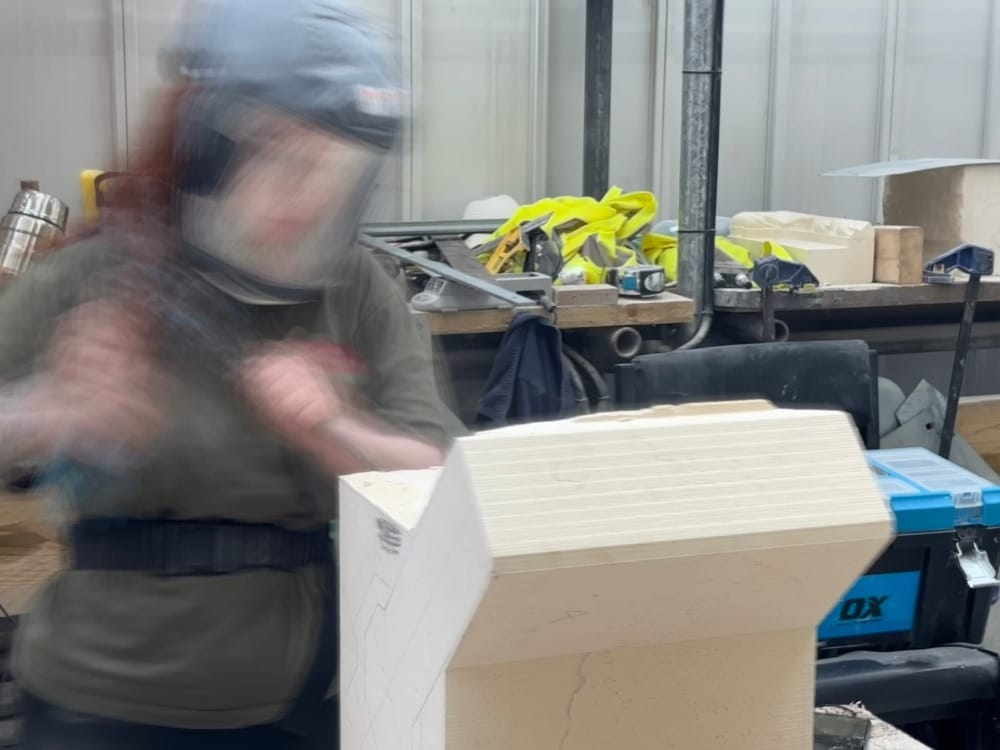
My journey began with a fox and finished with a robin, and in between, unfolded a tender map of sanctuary shaped by spontaneity, creativity, and the boundless kindness of others.
Together, we have the opportunity to breathe life into the stories of our world, stitching them into the very fabric of our existence, and perhaps making a better world through the inspiration of people and places like York Minster.

✨ With thanks to the lady Broderer and the kind man that took me to the ancient well. (I'm afraid I didn't catch your names) and to Joe, Vic, Freya, Dave, Nolan, Harriet and, of course, the Robin and the Fox.
*homage to Roger McGough
**Philip Larkin: The Old Fools

I'm offering a hardback book (signed with a message) from one of my recent travels to the next subscriber to sign up for membership.
A remarkable journey visiting castles and cathedrals.
If you do sign up and are not the first - I'm sending a photo card to all the other members that sign up today. Thank you.



Membership subscriptions help keep me on the road and help support Member Powered Photography.

Can you help support my work and keep Woody on the road?
Memberships from £2 per month - thank you.
Explore Member OptionsYork Minster.
To see my earlier visit to York Minster see here:

✨Here are some other places from my tender map of sanctuary - where the people and my lens took me during my visit.
St. Nicholas Chapel.

This is the chapel of the patron saint of children and there are touching references to St. Nicholas in the fabric of the altar frontal and the kneelers.
The altar frontal represents the three bags of gold from the story where St. Nicholas leaves them, in secret, for a poor man's daughters.
The kneelers have depictions from the twelve days of Christmas made by the Minster broderers. They French hens have their combs depicted in red white and blue.



Every student of embroidery has to complete the same sampler. Here's an example:

Few people see the lovely painting of St. Nicholas leaving his bags of gold on the blind arcading next to the altar in this chapel.

The Zouche Chapel.
The Zouche Chapel is a place of private prayer and you will need permission to enter it.
As well as the ancient well, there's a lovely collection of stained glass depicting animals. One of the most well known is the wren hunting a spider.
You can see facsimiles of this in the Minster shop.

There are other delightful quarries.




This fragment is one of my favourites. Note the door with its hinges and door pull:

..and then there's the well, of course.

The Cope Chests
A place of sanctuary? A little spot of meditative joy. Let your eyes wander through the swags and swirls of this C13th ornament of wonder.


Then let them come to rest upon the hinges, where there be dragons.

Surely this is the same blacksmith that made the doors to the chapter house?

Where there are also dragons:

There are two medieval cope chests which were used for storing vestments.
Free Digital Print for Members.

🎉 The above York Genius Loci hi-res file is available free as a digital print for Members:

Woody lodged next to the Chapter House

The Van Library is getting fuller.

I lunched and sketched at Sushi & Bowl #amsketching



'It seems to me that if we really want to know a place, we should abandon attempts to contain, to name, to stamp our identity on it. We should listen to its identity. Communicate. Abandon control.
For places to open up - for us to truly travel not to, but in them - we need to think of our places as companions, not destinations....
...Dear Beautiful, strange, dangerous, glorious, dark, wonderful, brutal, gentle wide world.
You are my true romance.
And this book is my map of tenderness.'
Alice Maddicott: Tender Maps - Travels in Search of the Emotions of Place.



This Time Last Year:
'Chipping Campden’s buildings betray a tantalising glimpse of the hopes, trials and tribulations of a single community throughout the growth of the town. The stylistic formality of classicism is embossed upon the jaunty angled village vernacular of a planned town of the C12th.'

The Cast Room is back!



Recent Digest Sponsors:

Meet the Fox and the Robin.
With thanks to the Dean and Chapter of York Minster.
I put my heart and soul into the Genius Loci Digest and it takes a day a week to produce. With your support, I’m able to keep this digest free and public facing. 📸🏛🚐



Sponsor a Membership and get your own landing page on the Digest
More information hereThank You!
Photographs and words by Andy Marshall (unless otherwise stated). Most photographs are taken with Iphone 14 Pro and DJI Mini 3 Pro.

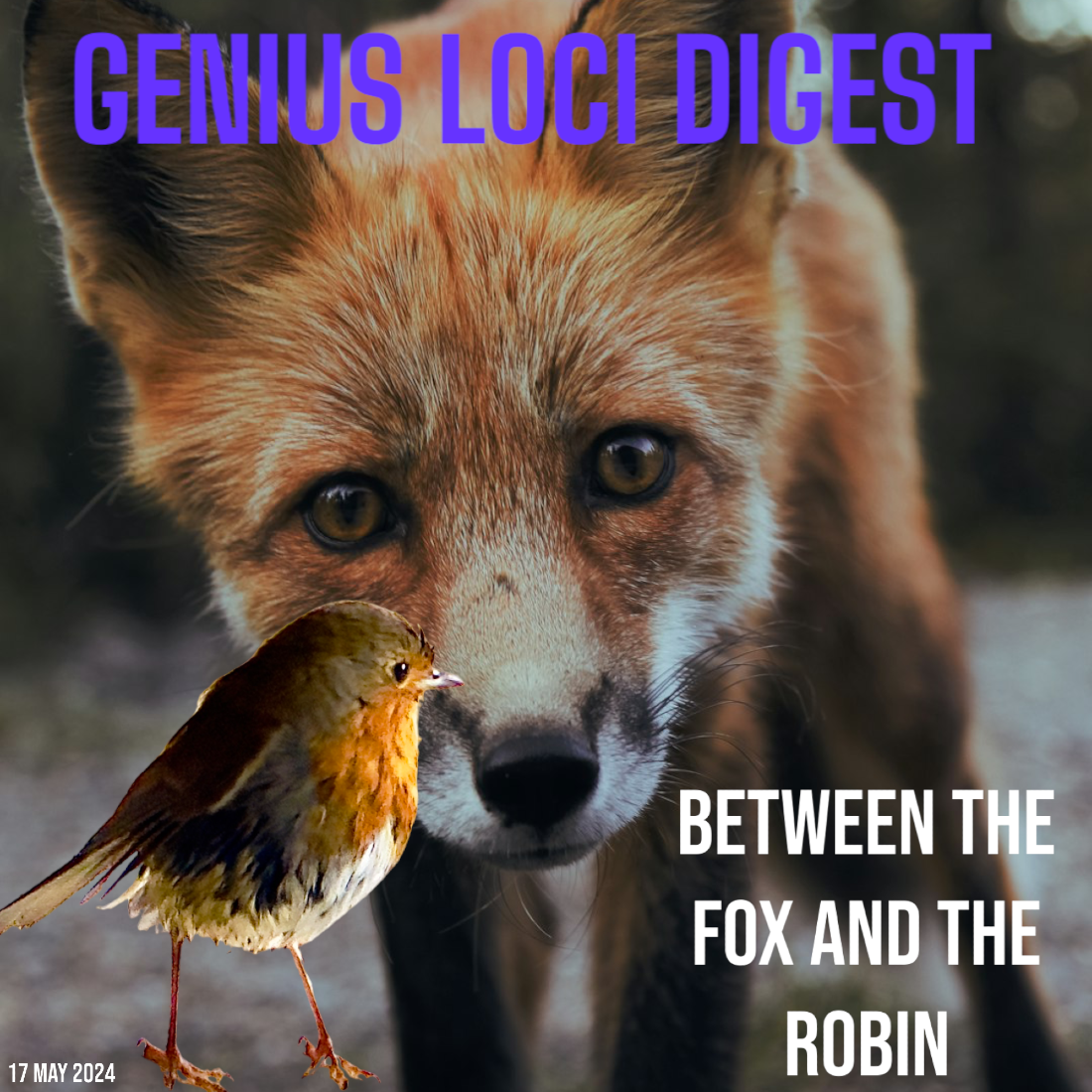




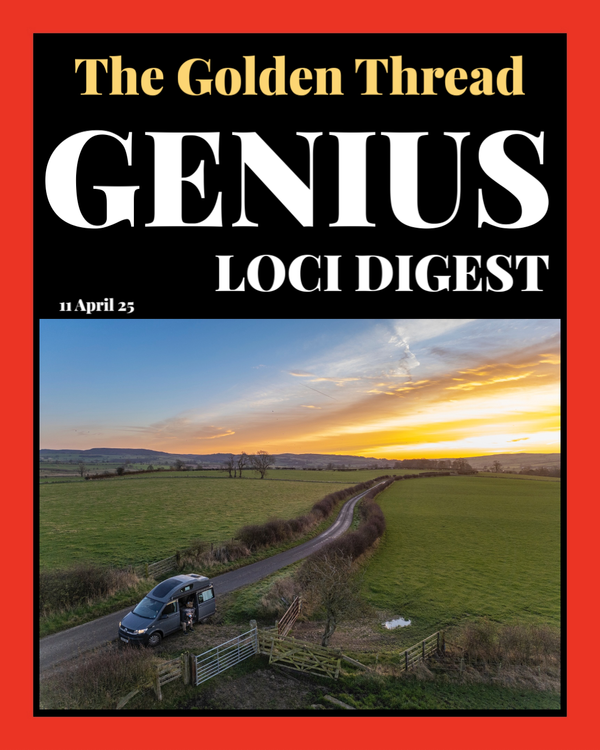
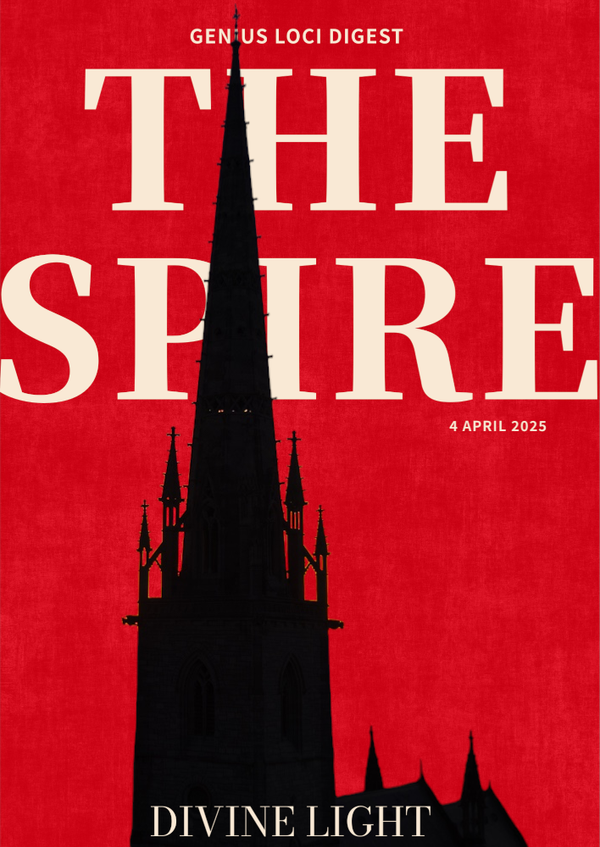
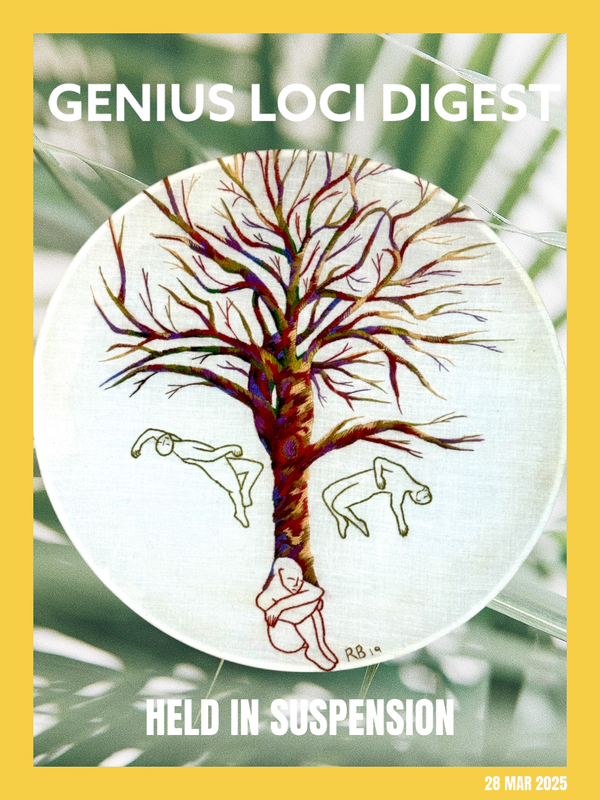

Member discussion